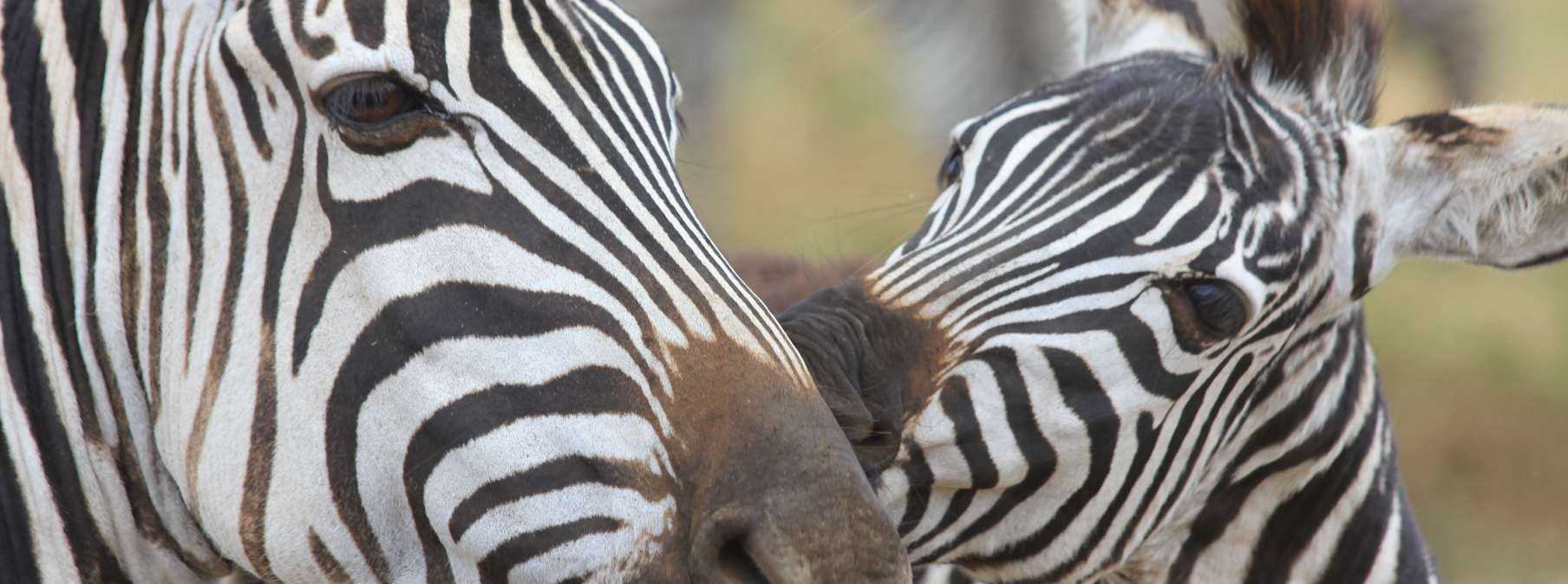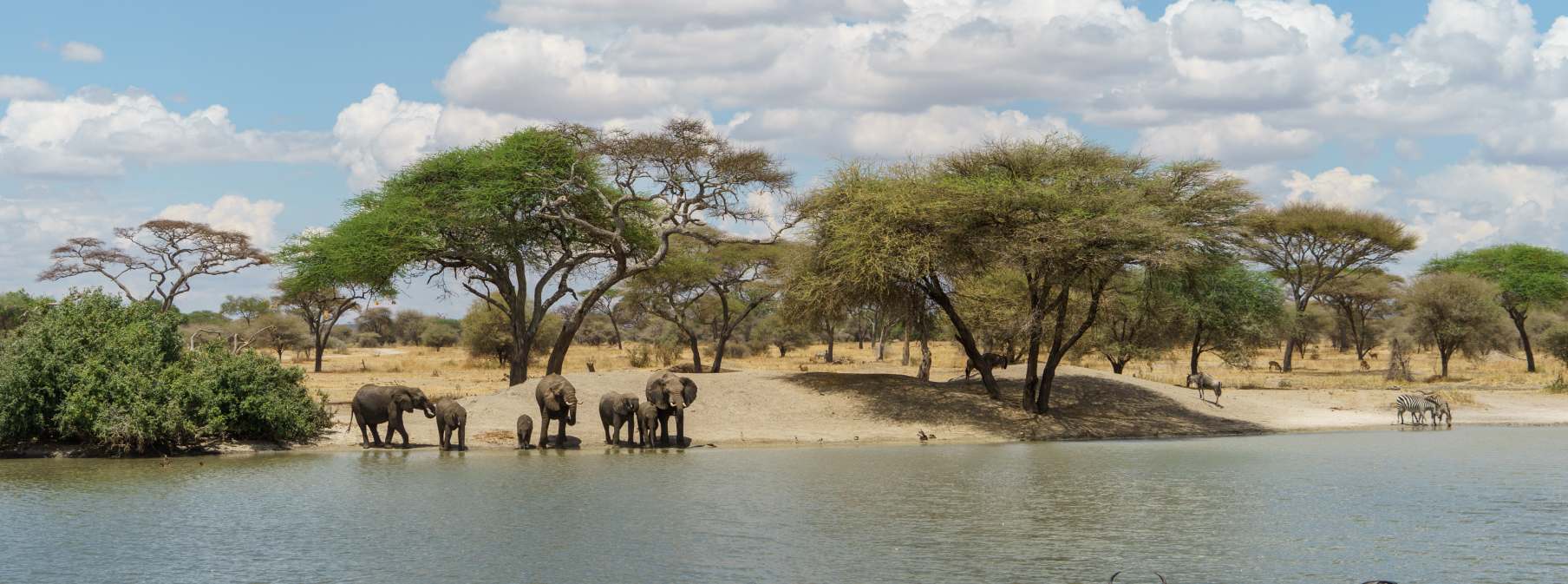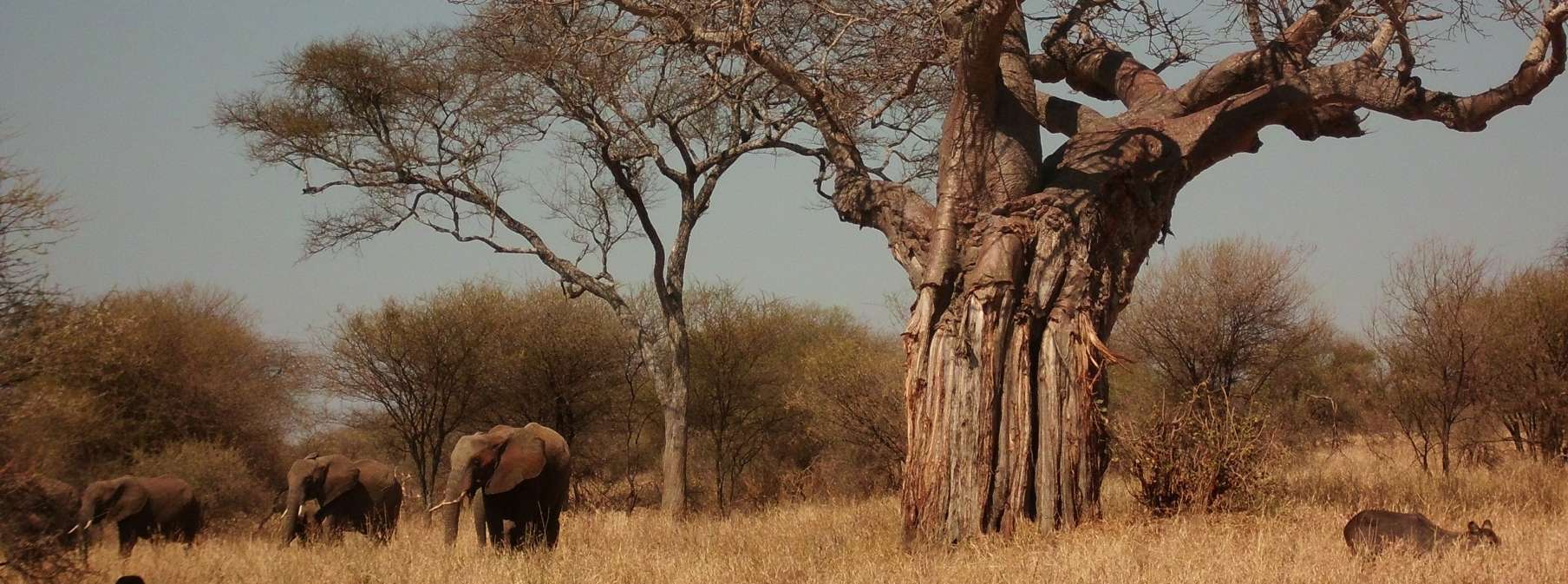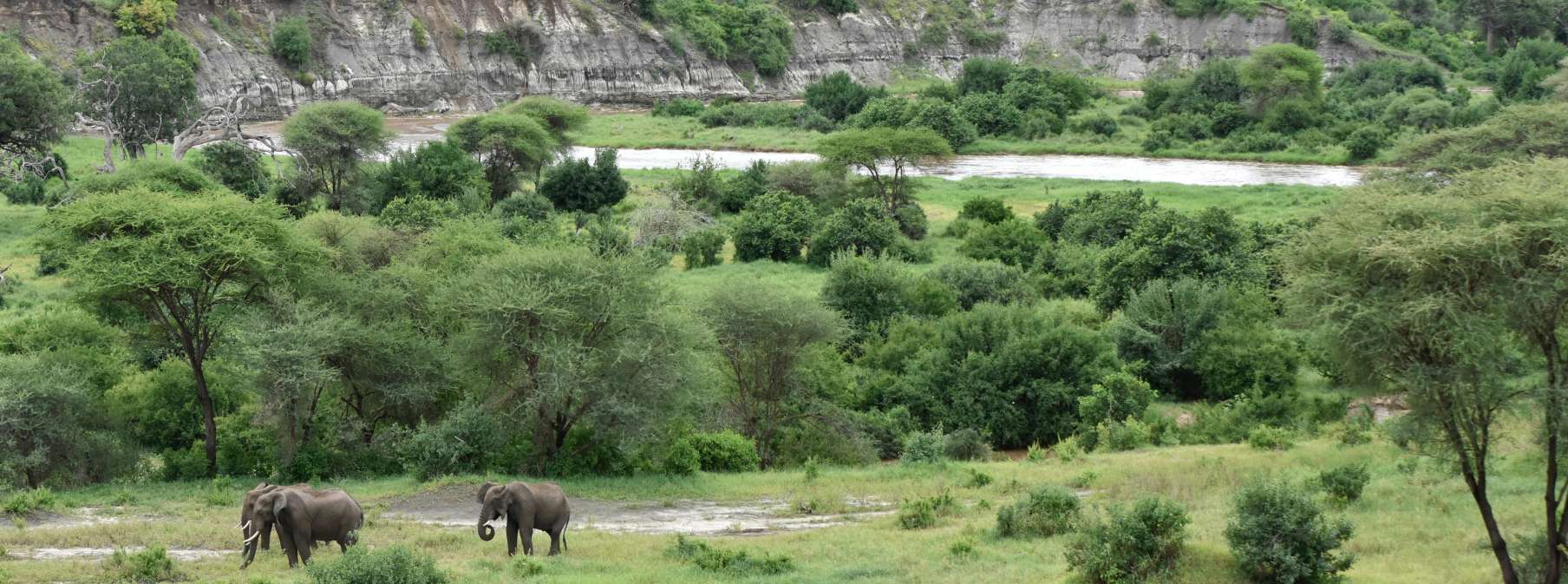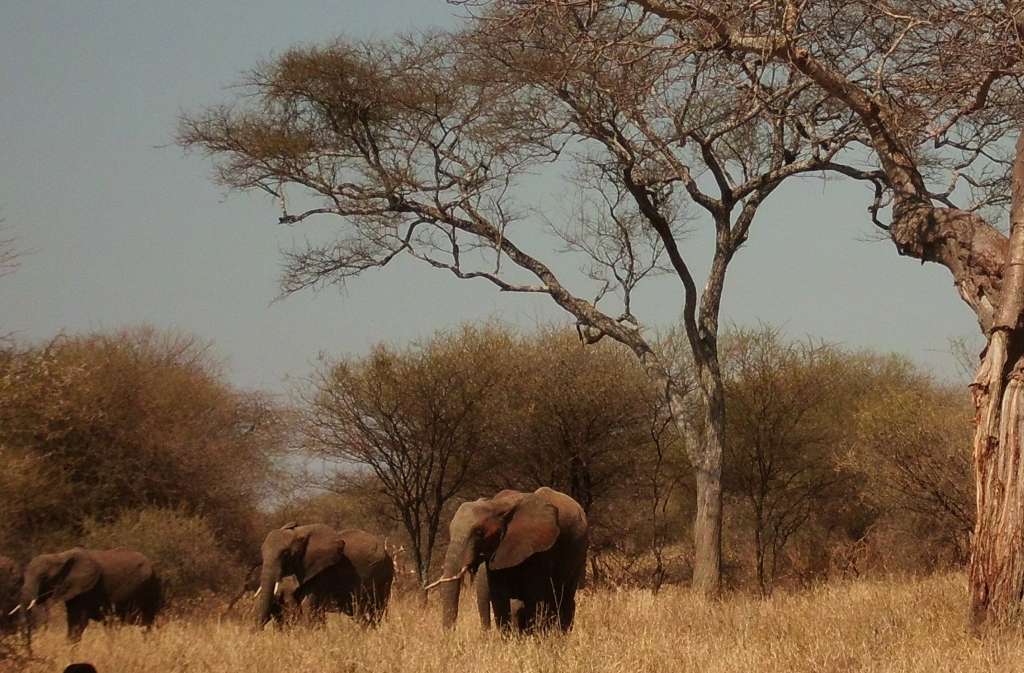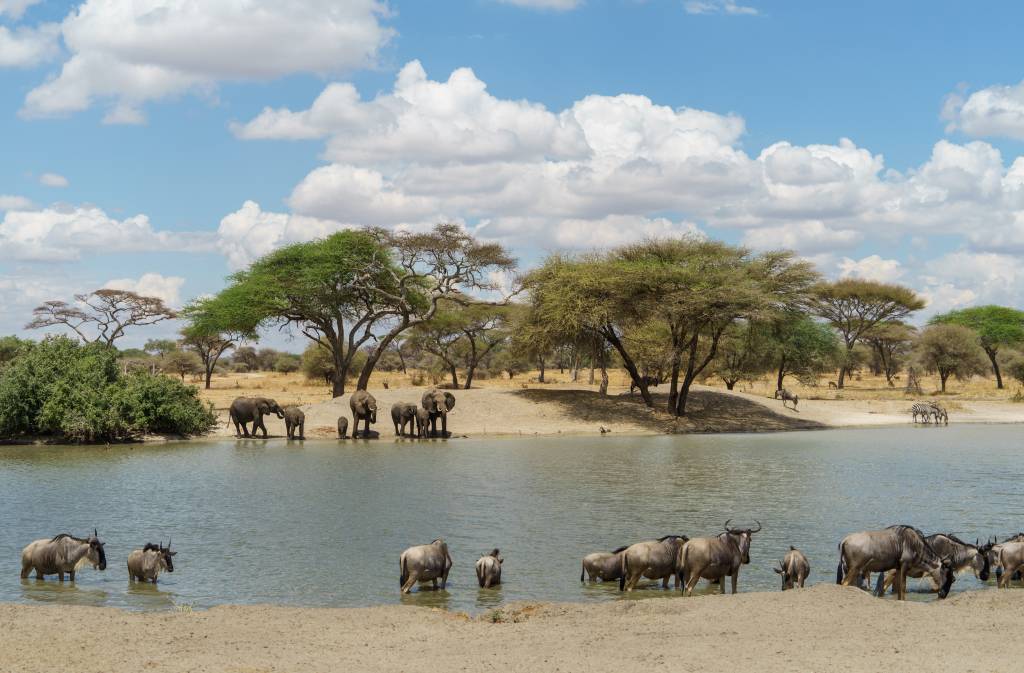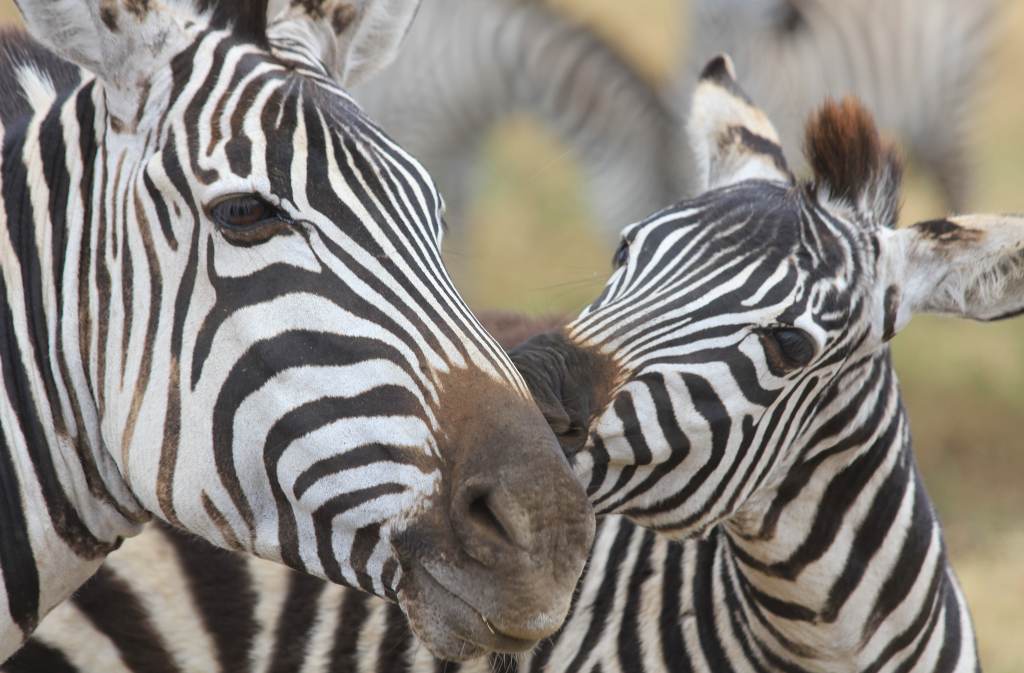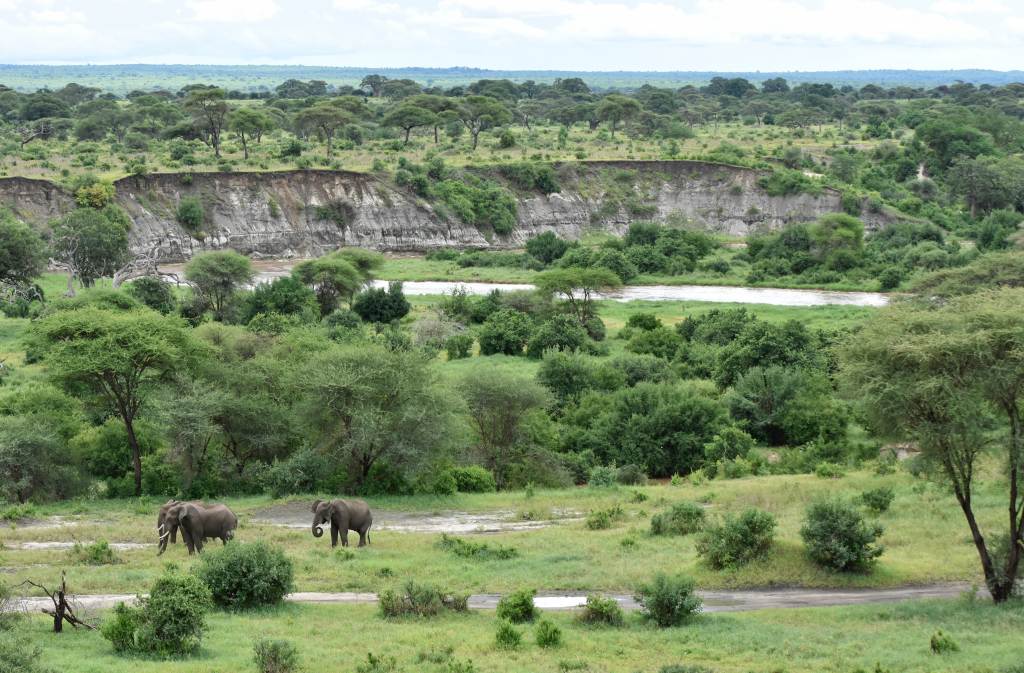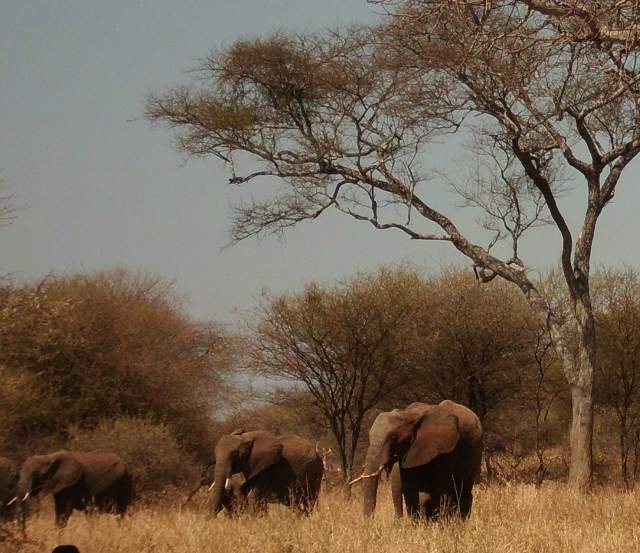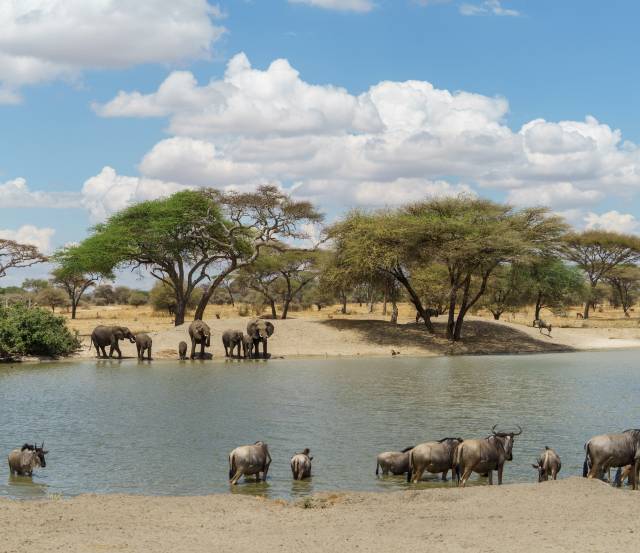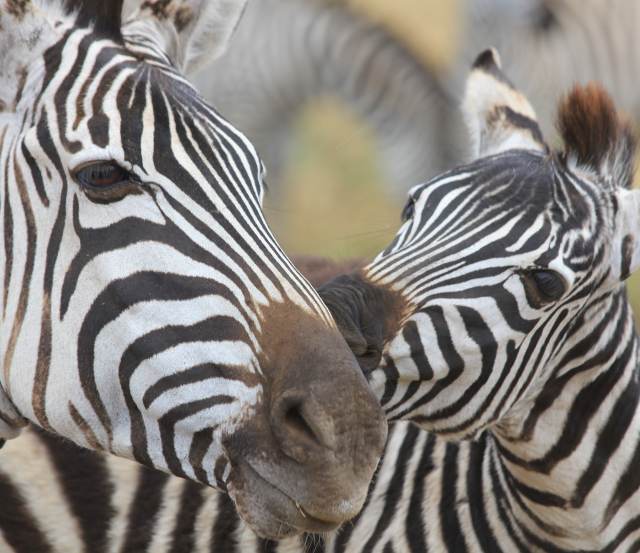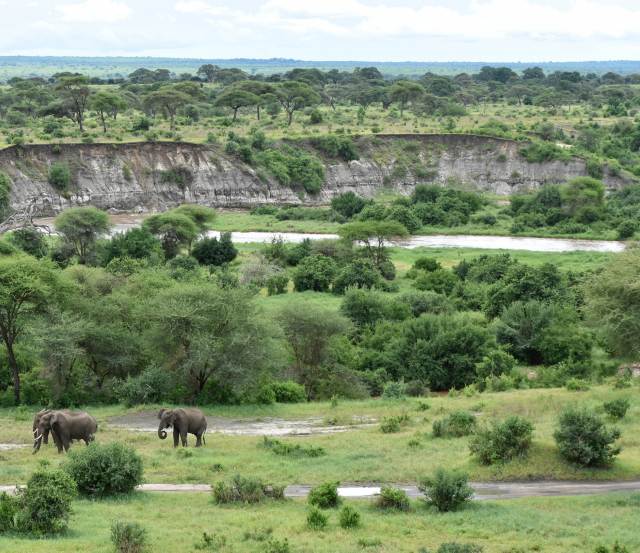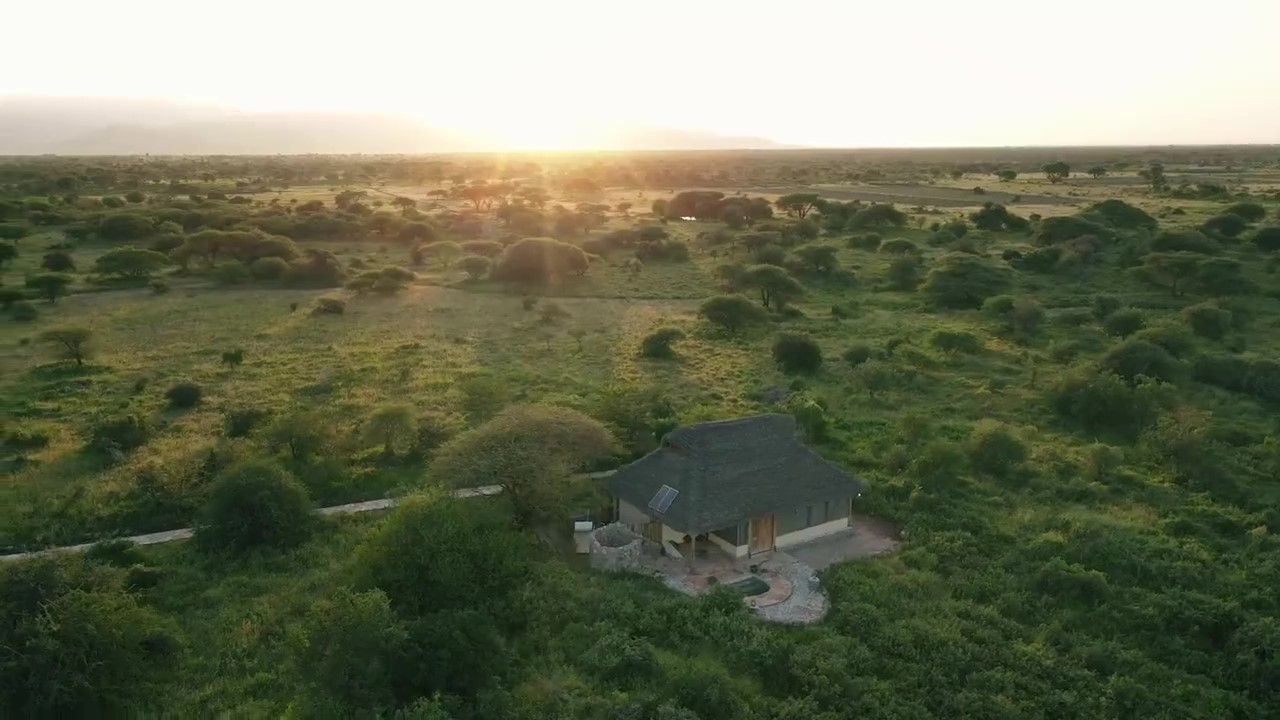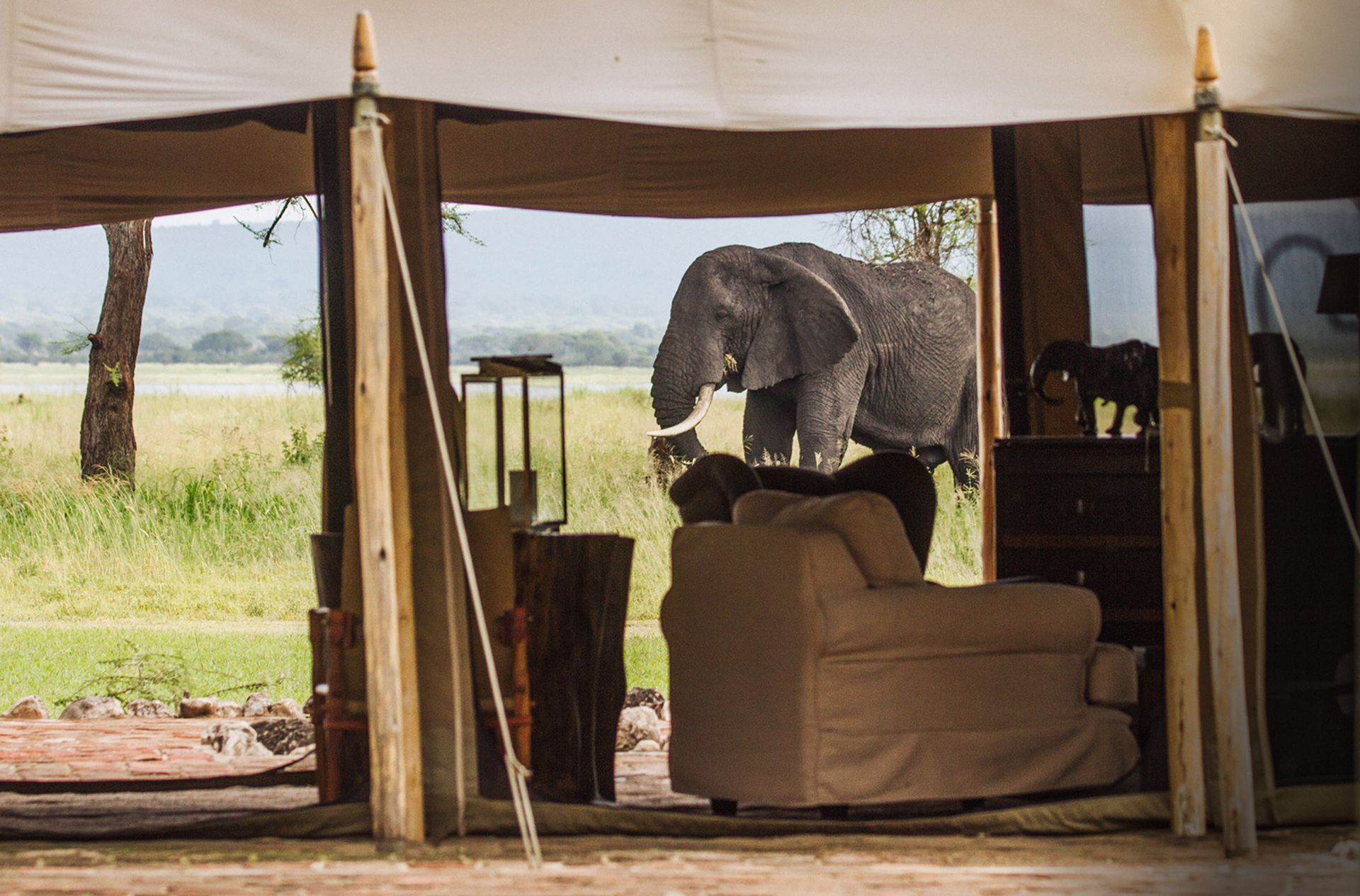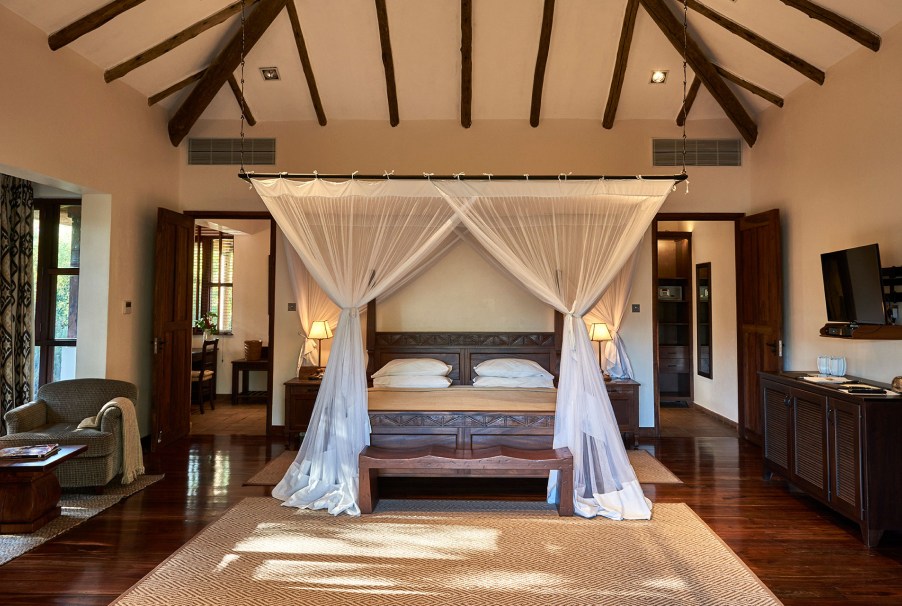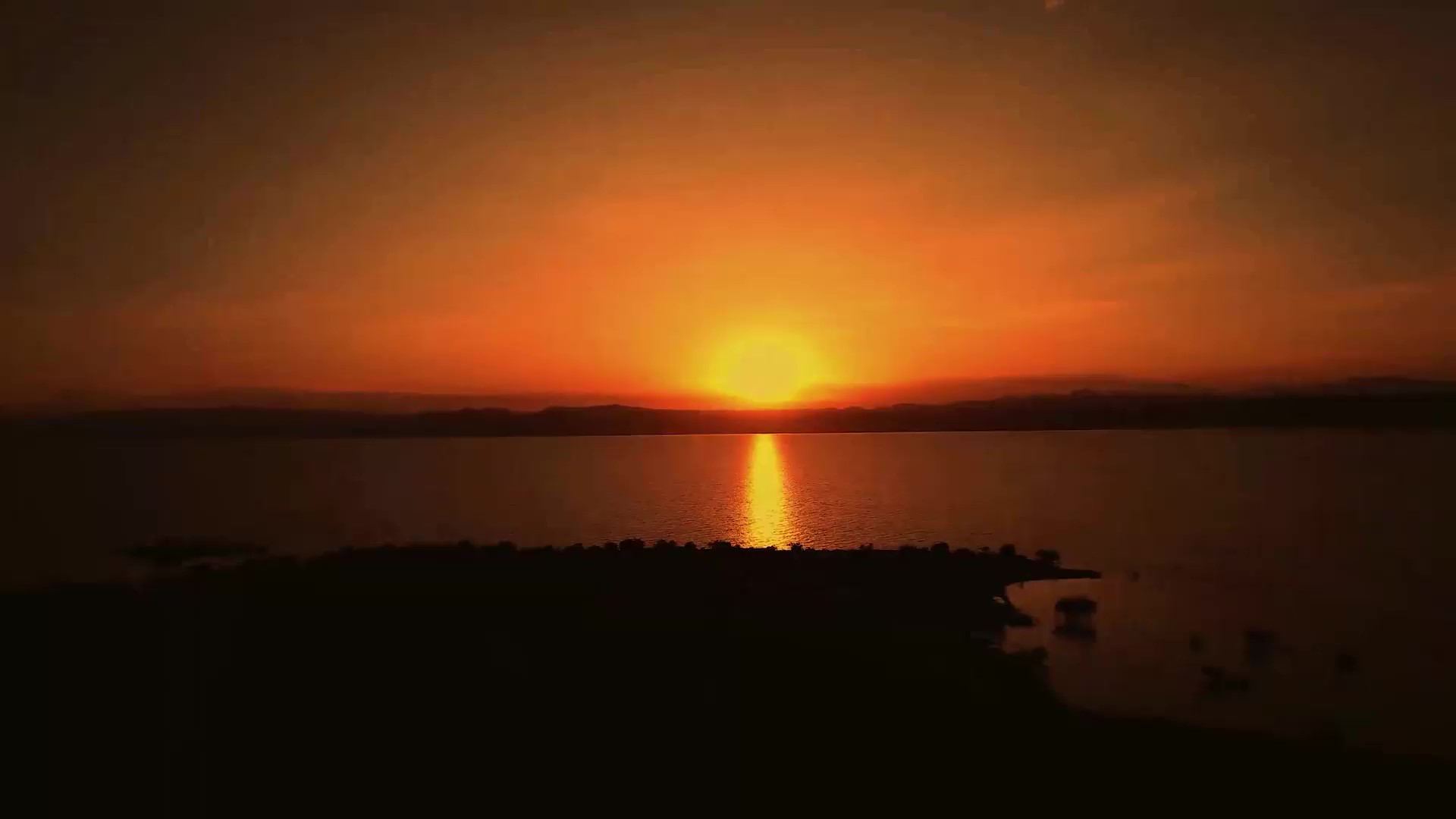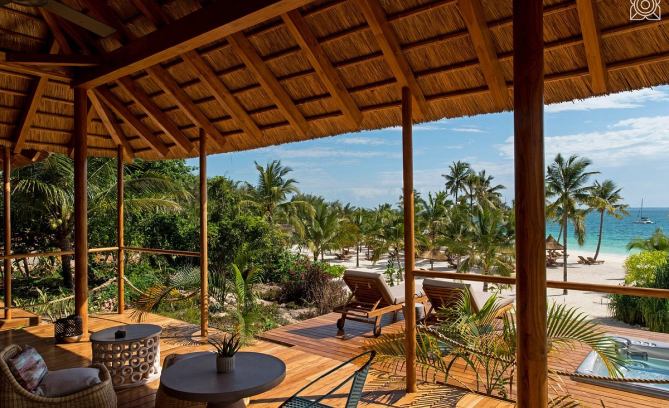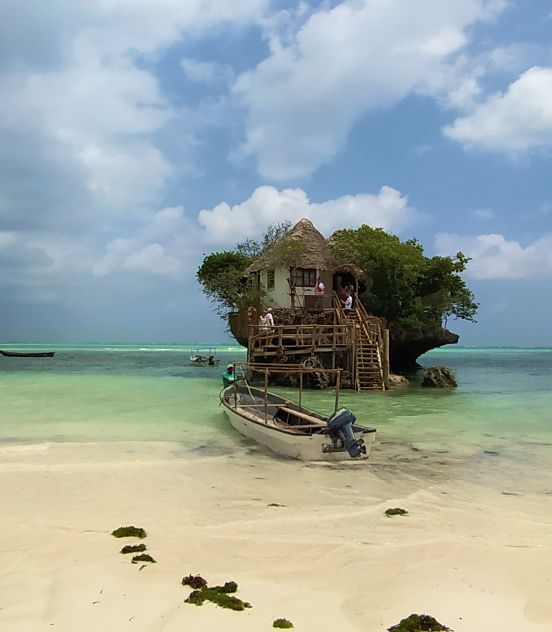Visit Tarangire,
the encounter with elephants and baobabs.
Tarangire National Park spans 2,600 km² and has been a national park since 1970. It boasts the second-largest concentration of wildlife in the country after Serengeti National Park, home to over 4,000 elephants today.
The park is named after the Tarangire River, which never runs completely dry, drawing in large numbers of animals. The river, fed by rainfall from the Arusha region, can overflow from January to May, making some areas inaccessible. By the end of the dry season in September, the river is nearly dry, leaving only a few waterholes.
The park is relatively flat except for the riverbed. The view from the top of the valley is absolutely breathtaking.
With 9 types of vegetation, including umbrella acacias and baobabs, Tarangire is especially rich in baobabs in the northern part of the park. The southern part is more marshy.
The park is located about 120 km from Arusha, and the drive from the city takes around 2.5 hours.
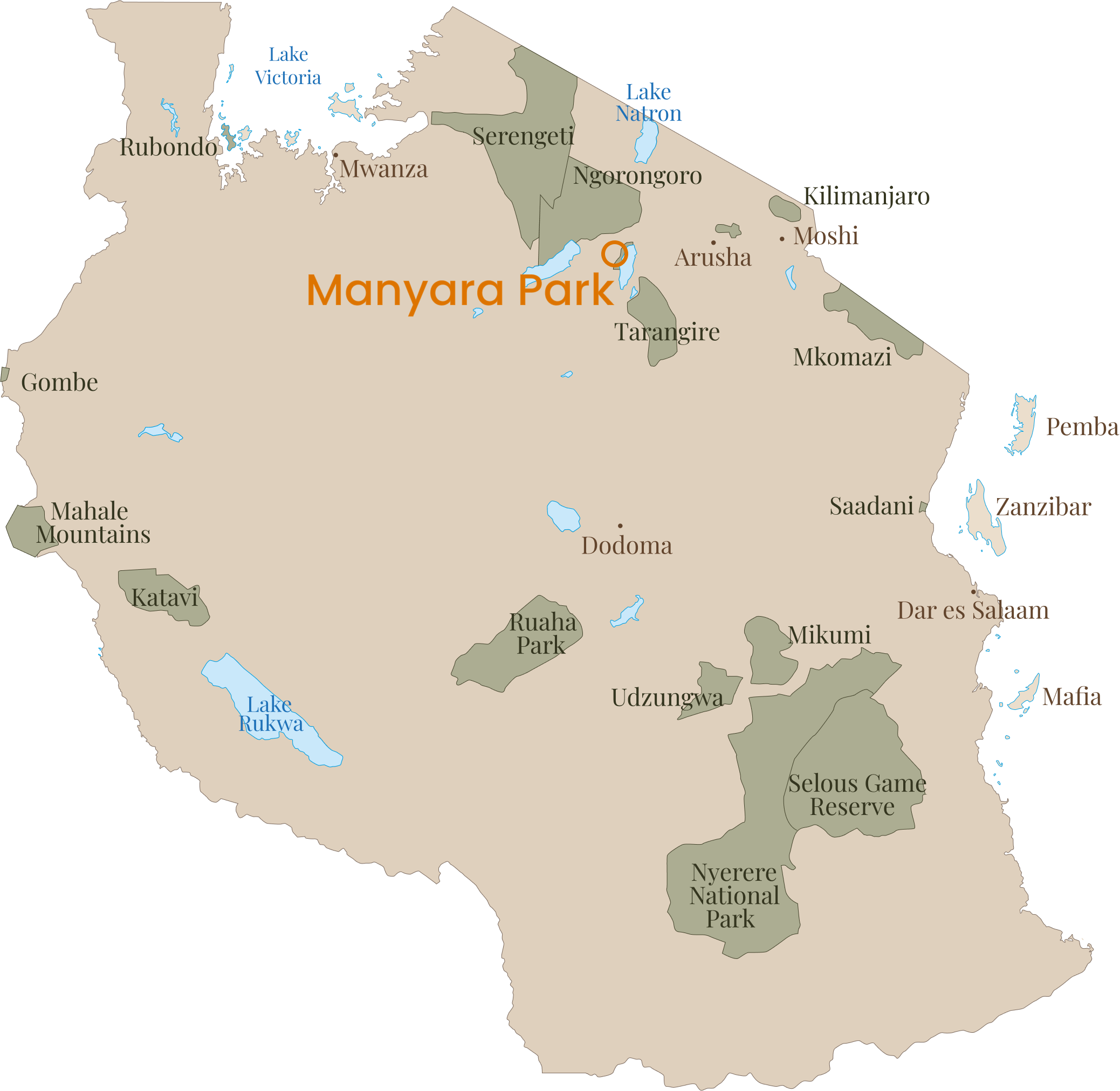
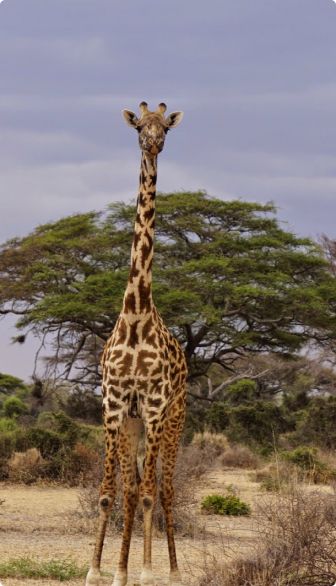
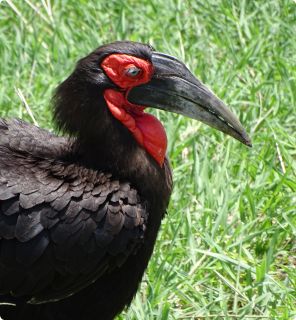
A journey to the heart of Tanzania's most beautiful landscapes.
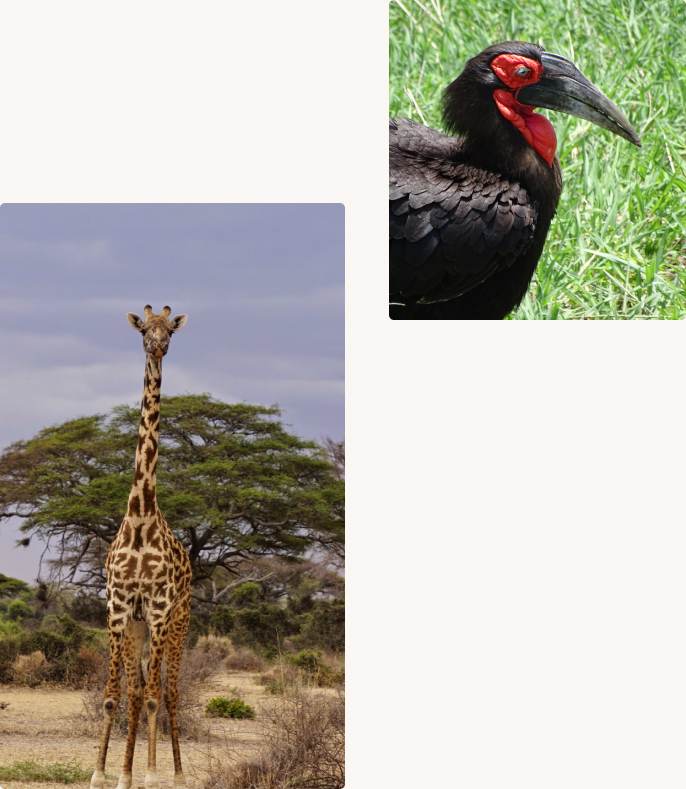
Habitat
& Animals
The Tarangire National Park attracts numerous animals thanks to the river Tarangire, which gives the park its name. It features 9 types of vegetation, including umbrella acacias and majestic baobabs that dominate the landscape, especially in the northern part of the park. The varied vegetation creates a mosaic of landscapes ranging from open grasslands to marshy areas in the south. The volcanic soil, rich in nutrients, supports a diverse flora, contributing to the abundance of wildlife. The riverbanks, although sometimes dry at the end of the dry season, remain a crucial water source for the animals in the park.
Look out for:
· Elephants
· Zebra
· Lion
· Cheetah
· Bubales
· Wild dog
A journey to the heart of Tanzania's most beautiful landscapes.
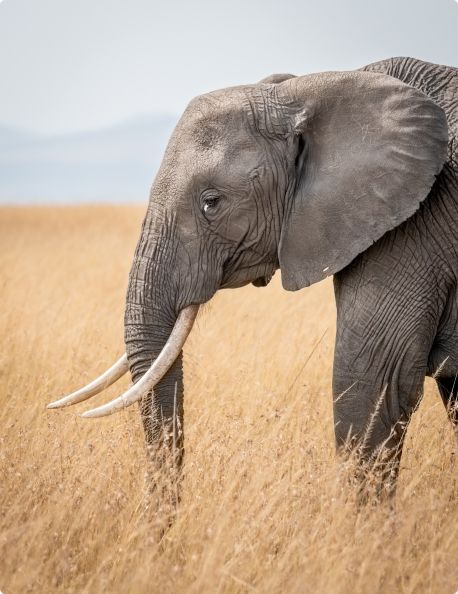
THE AFRICAN ELEPHANT
The African elephant is one of the largest land mammals. It stands about 3.5 meters at the shoulder and is 7 meters long. Males can weigh up to 7 tons, while females weigh around 4 tons, and they can live up to 60 years.
Elephants live in a matriarchal society, where females and their young form groups led by the oldest female. Adult males live alone. Herbivores, they consume up to 250 kg of plants and drink 80 liters of water per day.
The species is endangered due to poaching and habitat loss. In 2014, their population was fewer than 400,000 individuals, compared to 3 million at the beginning of the 20th century.
In Tanzania, since 2016, anti-poaching efforts have led to an increase in populations. Tourism plays a crucial role in their protection by generating revenue for their conservation.
 4×4 Safari
4×4 Safari
Traverse the vast expanses of the park in a 4x4 vehicle and observe up close the elephants, giraffes, and many other species in their natural habitat.
 Walking safari
Walking safari
Accompanied by an experienced guide, explore the wildest areas of the park on foot for a more intimate approach to nature and wildlife.
 Hot-air balloon
Hot-air balloon
Experience a unique adventure by flying over the plains of the park in a hot air balloon at dawn. Enjoy breathtaking views of the landscapes and wildlife in full activity.
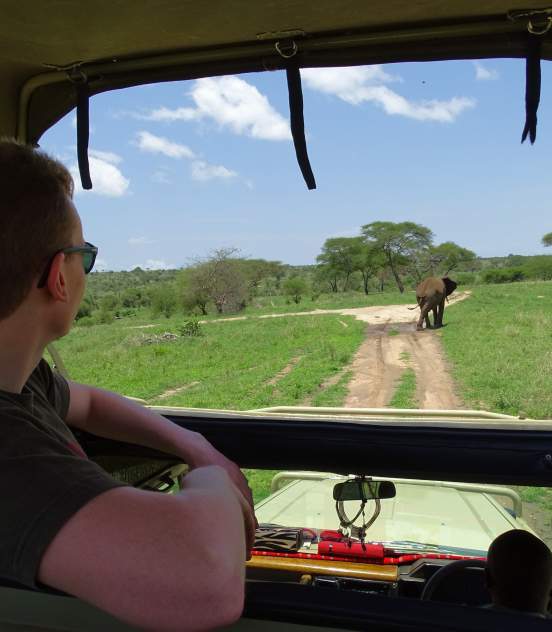
Your highlights
Elephants
in large numbers
The baobabs
The view of
the Tarangire River
Where to sleep
to make the most of Tarangire
These accommodations
have been selected with care
by our team.
Oremiti Lodge
Chem Chem Lodge
Sanctuary Swala
KORONGO CAMP
Oremiti Lodge
Burunge Lodge
Sanctuary Swala
Chem Chem Lodge

Guide's tip
“Tarangire National Park is one of my favorite parks. All those elephants with the baobabs in the background—it’s always such a wonderful sight. In the dry season, it’s much easier to spot animals as they concentrate around water points and the river. When there are more water points spread throughout the park, that’s when we can really showcase all our tracking experience!
Avoid wearing black and blue in this park, as those colors attract insects.”
Ally, Safari Guide
Similar safaris
Explore our travel itineraries and get in touch to plan your tailor-made adventure.
01
02
03
04
05
Horseback safari
06
07
08
Luxurious safari
